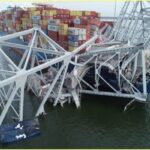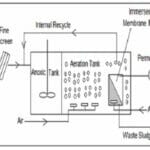- Course No E – 1409
- PDH Units 4.00
No data found for Custom Course Number
No data found for Custom Course Units
- Course No E – 1409
- PDH Units 4.00
Intended Audience: civil engineers, environmental engineers, chemical engineers
PDH UNITS: 4
Waste Treatment Stabilization & Solidification
The stabilization and solidification (S/S) technology is a highly-effective hazardous waste treatment, disposal and management solution used today. But with all of the different mechanisms, technologies and reagents, implementation options and system design considerations, navigating S/S waste treatment can be challenging. Dive into this hazardous waste stabilization and solidification course carefully prepared by industry specialist Dr. Karim, P.E., M.ASCE to get everything you need to know about waste treatment with S/S technology.Course Flow
This PDH engineering course kicks off with an introduction to the definitions, regulations and applications involved in hazardous was stabilization and solidification. After this comprehensive overview, we'll then move on to the mechanisms (eg. microencapsulation, absorption, adsorption, precipitation, detoxification) involved in S/S hazardous waste treatment. We'll then cover popular reagent additives to S/S technology for waste treatment (e.g. cement, pozzolans, lime, soluble silicates, organically modified clay, modified lime, thermosetting organic polymers, thermoplastic materials and vitrification Next, this course then describes the overall ability of a stabilized material to leach contaminants (i.e. leachability) and the range of variables that affect contaminant concentrations in leachate. After this discussion, the course material walks through a wide range of specific extraction and leaching testing methodologies including the EPA's Toxicity Characteristics Leaching Procedure (TCLP) as well as the Paint Filter Test, Liquid Release Test, Extraction Procedure Toxicity Test, American Nuclear Society Leach Test, Equilibrium Leach Test, Dynamic Leach Test, Sequential Chemical Extraction, Multiple Extraction Procedure, the different chemical tests, and the Physical and Engineering Property Test. Following these extraction and leaching testing descriptions, the different field implementation options are then delineated. In particular, this section describes In-Drum Mixing Alternatives, In-Situ Mixing Alternatives as well as Plant Mixing Alternatives. This online PDH course wraps up by outlining the important terms, components, waste characterizations, site considerations, and flow of stabilization processes involved in waste treatment systems design.Learning Objectives
At the successful conclusion of this course, you’ll be able to identify and discuss:- Understand the basics of hazardous waste treatment stabilization and solidification.
- Learn different mechanisms of hazardous waste stabilization and solidification.
- Be familiar with different technologies and reagents used for waste stabilization and solidification.
- Gain the knowledge of different EPA test methods used for waste treatment stabilization and solidification technology.
Once completed, your order and certificate of completion will be available in your profile when you’re logged in to the site.
Ethics Courses
Course No E - 1409
PDH Units 4.00










